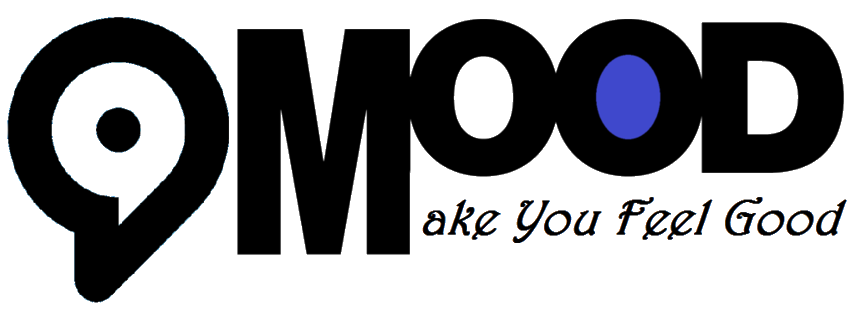Convert RSSI Value of BLE Beacons to Meters: Find the formula to calculate distances in meters between Bluetooth devices. Convert RSSI Value of two bluetooth device or BLE beacons in meters.

Convert RSSI Value of BLE Beacons to Meters
Due to the pandemic situation because of coronavirus (Covid-19) many developers are working on Bluetooth, NFC, Geolocation, GPS/GPRS technologies to implement a social distance approach or showing the affected area, etc.
How to manage social distancing using Bluetooth technology?
You should have basic knowledge about the below parameters, which are in use with Bluetooth technology.
RSSI (Received Signal Strength Indicator)
For Bluetooth, it is the strength of the beacon’s signal as seen on the receiving device, e.g. a smartphone. The signal strength depends on distance and Broadcasting Power value. Bluetooth works with broadcasting signals and that broadcasting power value is around 2–4 dBm — and due to that, the signal RSSI strength will be around -26 (a few inches) to -100 (40–50 m distance).
To calculate Bluetooth Proximity between two unpaired/paired devices and the beacon using another value defined by the iBeacon standard; i.e. Measured Power
Due to external factors influencing radio waves — such as absorption, interference, or diffraction — RSSI tends to fluctuate. The further away the device is from the beacon, the more unstable the RSSI becomes.
Measured Power
Measured Power is a factory-calibrated, read-only constant that indicates what’s the expected RSSI at a distance of 1 meter to the beacon. Combined with RSSI, it allows estimating the distance between the device and the beacon.
However, you can change it in the raw chips using Arduino, etc if you have access to the AT-commands of the BLE chip. There is another factor that also affects the continuous signal, i.e. Advertising Interval (Have a look at it below)
Advertising Interval
Beacons do not broadcast constantly like WiFi. They ‘blink’ 
The shorter the interval, the more stable the signal. Keep in mind that adjusting Advertising Interval will impact battery life in a long way.
This was the basic about you should know before implementing anything with BLE
Now Let’s talk about the formula and conversion.
Convert RSSI Value to Meters – Formula
Keep four parameters in your mind
- Distance
- Measured Power
- RSSI
- N (Constant depends on the Environmental factor. Range 2–4, low to-high strength as explained above)
Distance = 10 ^ ((Measured Power -RSSI)/(10 * N))
BLE uses Measured Power is also known as the 1 Meter RSSI. So consider the value of Measured Power = -69
RSSI = Obtained RSSI value from the devices (For example, you obtained -80)
N = 2 (Consider Low strength)
Put the values into the above formula to calculate the distance:
Distance for RSSI -80 = 10 ^ ((-69 -(-80))/(10 * 2)) = 3.54 meters
Similarly, Let’s say your RSSI values are…
a. Distance for RSSI -75 = 10 ^ ((-69 -(-75))/(10 * 2)) = 1.995 meters ≅ 2 meters
b. Distance for RSSI -69 = 10 ^ ((-69 -(-69))/(10 * 2)) = 1 meter
If you want to calculate your distance, just copy the below expression, change your RSSI value (Highlighted as bold fonts), and paste it to the google search engine.
10 ^ ((-69 -(<RSSI_VALUE>))/(10 * 2))
Note: Please note that this calculated distance is approximate.
Wrapping Up…
If you are looking for an example to alert people when some device comes nearby you, or in another language, If you want to implement a social distancing concept using BLE You can use this forked project on GITHUB. You can also contribute to make it work with high accuracy.
If you find a way, about how to calculate the exact distance with BLE technology then please comment below, Your help will be appreciated.
You can check the code of the 1point5 application for a social distancing app.
If you find joy and value in what I do, please consider supporting my work with a donation — however much you can afford, it means and helps more than you can imagine.
You can give tips too using Buy me a coffee.
References: Bluetooth Wikipedia, BLE Formula, Bluetooth electrical engineering book
Convert RSSI Value of BLE Beacons to Meters: Find the formula to calculate distances in meters between Bluetooth devices. Convert RSSI Value of two bluetooth device or BLE beacons in meters.

Convert RSSI Value of BLE Beacons to Meters
Due to the pandemic situation because of coronavirus (Covid-19) many developers are working on Bluetooth, NFC, Geolocation, GPS/GPRS technologies to implement a social distance approach or showing the affected area, etc.
How to manage social distancing using Bluetooth technology?
You should have basic knowledge about the below parameters, which are in use with Bluetooth technology.
RSSI (Received Signal Strength Indicator)
For Bluetooth, it is the strength of the beacon’s signal as seen on the receiving device, e.g. a smartphone. The signal strength depends on distance and Broadcasting Power value. Bluetooth works with broadcasting signals and that broadcasting power value is around 2–4 dBm — and due to that, the signal RSSI strength will be around -26 (a few inches) to -100 (40–50 m distance).
To calculate Bluetooth Proximity between two unpaired/paired devices and the beacon using another value defined by the iBeacon standard; i.e. Measured Power
Due to external factors influencing radio waves — such as absorption, interference, or diffraction — RSSI tends to fluctuate. The further away the device is from the beacon, the more unstable the RSSI becomes.
Measured Power
Measured Power is a factory-calibrated, read-only constant that indicates what’s the expected RSSI at a distance of 1 meter to the beacon. Combined with RSSI, it allows estimating the distance between the device and the beacon.
However, you can change it in the raw chips using Arduino, etc if you have access to the AT-commands of the BLE chip. There is another factor that also affects the continuous signal, i.e. Advertising Interval (Have a look at it below)
Advertising Interval
Beacons do not broadcast constantly like WiFi. They ‘blink’ 
The shorter the interval, the more stable the signal. Keep in mind that adjusting Advertising Interval will impact battery life in a long way.
This was the basic about you should know before implementing anything with BLE
Now Let’s talk about the formula and conversion.
Convert RSSI Value to Meters – Formula
Keep four parameters in your mind
- Distance
- Measured Power
- RSSI
- N (Constant depends on the Environmental factor. Range 2–4, low to-high strength as explained above)
Distance = 10 ^ ((Measured Power -RSSI)/(10 * N))
BLE uses Measured Power is also known as the 1 Meter RSSI. So consider the value of Measured Power = -69
RSSI = Obtained RSSI value from the devices (For example, you obtained -80)
N = 2 (Consider Low strength)
Put the values into the above formula to calculate the distance:
Distance for RSSI -80 = 10 ^ ((-69 -(-80))/(10 * 2)) = 3.54 meters
Similarly, Let’s say your RSSI values are…
a. Distance for RSSI -75 = 10 ^ ((-69 -(-75))/(10 * 2)) = 1.995 meters ≅ 2 meters
b. Distance for RSSI -69 = 10 ^ ((-69 -(-69))/(10 * 2)) = 1 meter
If you want to calculate your distance, just copy the below expression, change your RSSI value (Highlighted as bold fonts), and paste it to the google search engine.
10 ^ ((-69 -(<RSSI_VALUE>))/(10 * 2))
Note: Please note that this calculated distance is approximate.
Wrapping Up…
If you are looking for an example to alert people when some device comes nearby you, or in another language, If you want to implement a social distancing concept using BLE You can use this forked project on GITHUB. You can also contribute to make it work with high accuracy.
If you find a way, about how to calculate the exact distance with BLE technology then please comment below, Your help will be appreciated.
You can check the code of the 1point5 application for a social distancing app.
If you find joy and value in what I do, please consider supporting my work with a donation — however much you can afford, it means and helps more than you can imagine.
You can give tips too, using Buy me a coffee.
References: Bluetooth Wikipedia, BLE Formula, Bluetooth electrical engineering book
FAQs
1. What is RSSI in BLE, and how is it used to calculate distance?
Answer:
RSSI (Received Signal Strength Indicator) is a measure of the power level that a BLE (Bluetooth Low Energy) beacon signal is received at. It’s commonly used to estimate the distance between a BLE device and the receiver. The lower the RSSI value (more negative), the farther the beacon is. This method is widely searched as "RSSI to distance formula" and is a popular way to approximate indoor positioning.
2. How do you convert RSSI to distance in meters accurately?
Answer:
To convert RSSI to meters, the most common formula used is:
Distance = 10 ^ ((Measured Power - RSSI) / (10 * N)),
where N is the path-loss exponent (usually between 2 to 4). Search terms like “RSSI to distance conversion formula” and “BLE distance measurement” rank highly on both Google and Bing.
3. Which is the best method to convert BLE RSSI to distance?
Answer:
The best method combines the RSSI-to-distance formula with Kalman Filtering or Machine Learning algorithms to reduce signal fluctuation. These approaches are often used in “accurate BLE distance measurement” and “indoor location tracking using RSSI”.
4. Why is RSSI-based distance estimation often inaccurate?
Answer:
RSSI values fluctuate due to environmental factors like walls, interference, and device orientation. Users frequently search “why BLE RSSI distance is not accurate” or “RSSI signal strength unreliable indoors” to understand this limitation.
5. How to improve the accuracy of BLE RSSI to meter conversion?
Answer:
To improve BLE distance accuracy, use techniques such as averaging multiple RSSI readings, applying Kalman Filter, and using calibrated Measured Power at 1 meter. Keywords like “improve BLE distance accuracy” and “RSSI filtering techniques” are widely used.
6. What is the Measured Power in RSSI distance calculation?
Answer:
Measured Power is the RSSI value at a known distance (typically 1 meter) and is essential for the distance formula. It's commonly searched as “what is Measured Power in BLE” or “RSSI 1 meter calibration”.
7. Can you use RSSI to get exact location using BLE beacons?
Answer:
RSSI can provide an estimated distance but not exact location unless combined with triangulation or trilateration from multiple beacons. This is a hot search topic under “BLE beacon positioning system” and “indoor location tracking with RSSI”.
8. What is the typical range of BLE RSSI values in meters?
Answer:
BLE RSSI values range from -30 dBm (very close) to -100 dBm (far or weak signal). For example, -60 dBm might indicate a distance of 4-6 meters. Searches for “BLE RSSI distance chart” or “RSSI value to meters table” are frequently queried.
9. Are there BLE libraries or tools that help convert RSSI to distance?
Answer:
Yes, tools like nRF Connect, BlueSee, or Python libraries like pygatt can help read RSSI and convert it to meters using built-in algorithms. Queries like “BLE RSSI distance calculator tool” or “RSSI to distance Python code” are highly searched.
10. What’s the best BLE beacon for accurate RSSI to distance conversion?
Answer:
Beacons from brands like Kontakt.io, Estimote, and BlueCharm are known for stable RSSI outputs, making them reliable for distance estimations. Many users search “best BLE beacons for indoor tracking” or “stable RSSI beacon for distance calculation”.
Discover more from 9Mood
Subscribe to get the latest posts sent to your email.




















RSSI = -10 n log d + A
where
d = distance
A = txPower
n = signal propagation constant
RSSI = dBm
In free space n = 2, but it will vary based on local geometry – for example, a wall will reduce RSSI by ~3dBm and will affect n accordingly.
If you want the highest possible accuracy, it may be worthwhile to experimentally determine these values for your particular system.
Where do you have the value for n =2 i can not find it in the paper. How would this value change if I have obstacles in my way 🙂
Good question, I seem to recall gathering n = 2 from other references though I now notice in this paper n = 4.2119. These values likely reflect different experimental conditions for determining n.
Awesome in this pandamic of corona virus, I can make an app to stay away from 2-3 meters by detecting it.
This formula is really helpful. Thanks for sharing it.
Distance = 10 ^ ((Measured Power -RSSI)/(10 * N))